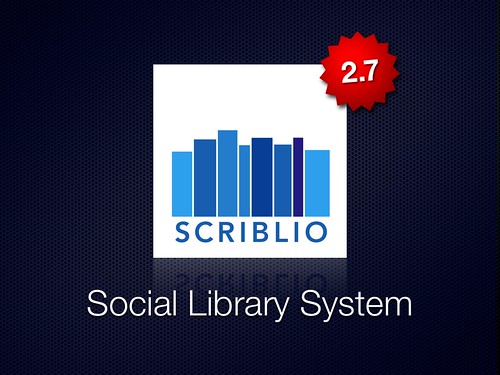My slides for my presentation yesterday at code4lib are available both as a 2.7MB QuickTime and a 7.8 MB PDF, while the gist of talk went something like this:
Scriblio is an open source WordPress plugin that adds the ability to search, browse, and create structured data to the the popular blog/content management platform. And WordPress adds great ease of use, permalinks, comments/trackbacks/pingbacks, and other social and web-centric features to that structured data. But that’s not news. The news is that Scriblio now has an internal data model that supports much more sophisticated uses (slides 3 and 4). Whereas previous versions of Scriblio were mostly just display and social interaction interfaces to data that’s created or managed elsewhere, this new version supports soup to nuts creation and management of collections. Colby-Sawyer College’s archive (slide 5) is the first to implement this (take note of how the horizontal search layout makes the facets more visible and usable).
And that new data model also improves the usefulness of Scriblio to regular libraries (Collingswood (NJ) Public Library is shown on slide 6). Because Scriblio has an internal awareness of the metadata, it can automatically merge records from multiple sources (or multiple copies of the same record from the same source). The source of each piece of metadata in a record is identified and preserved (see the sourceid column in slides 7,8,9), allowing records to contain data from multiple sources (each with, perhaps, its own licensing terms). A practical example is enriching book records with data from LibraryThing’s Common Knowledge web service, making that data part of the index and facets in the local catalog, while also properly crediting the service when a record contains that data.
The automated merging of records enables a few new applications. Among them: the merging of an A to Z periodical list with the ILS’s inventory, or the creation of a union catalog from several systems. Slide 11 shows a prototype union catalog that shows materials (and their real-time availability) from three institutions in New Hampshire. Assembling that catalog was as easy as entering each ILS’s hostname and record number range in the harvester (slide 12).
I didn’t mention it during the presentation, but Scriblio is now built to work well in both regular WordPress as well as WordPress MU, the multi-user version of WordPress that allows a single installation to host many different sites (think WordPress.com) at a marginal cost to the hosting organization that approaches zero. The work to make Scriblio compatible with WordPress MU was supported in part by the National Endowment for the Humanities (there’s lots more to say about that project soon).
